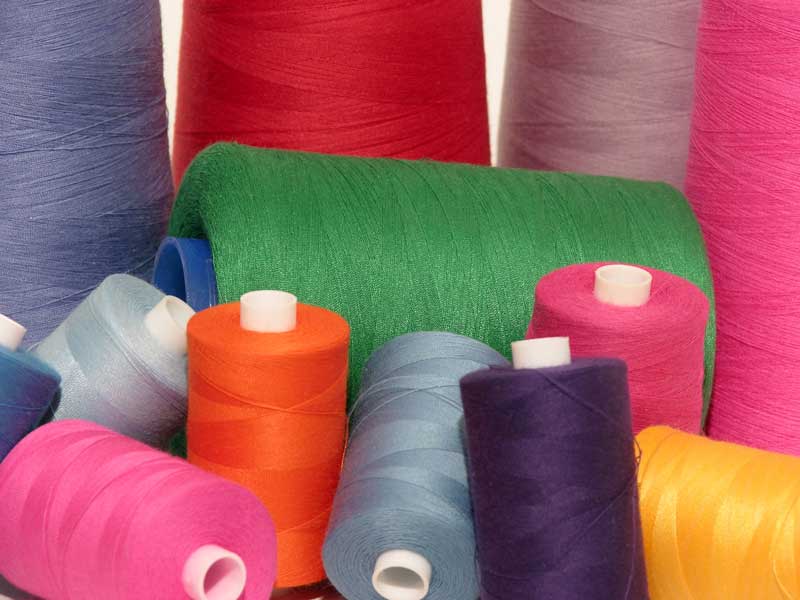Design & Creation
This edition is a continuation from the last which discussed General Purpose Spun Poly Thread. 120s Polycore was a further development step and is ideal an ideal General Purpose & Machine Quilting Thread. It was originally designed for industry after ‘conventional’ polyester thread no longer stood up to the demands of high speed industrial sewing machines. The standard polyester kept breaking as it was weakened (essentially melted) by the heat created in the needle during high speed industrial sewing. To counter this 120s Polycore Thread was created.
General Principle
120s Polycore is formed by twisting two slivers of cotton around a central core of polyester. This sheathed strand is then twisted with another two identical strands (making the important three) to create a strong yet critically cylindrical thread. The cotton completely sheathes the polyester so at no point when touching a polycore thread do you actually come into direct contact with any polyester.
This can be easily tested as, in fact, it is even obvious to the naked eye that the polyester is totally buried inside the cotton as when the thread is dyed, the overall appearance is matt. If the polyester was near the surface then it would ‘shine’ through the matt cotton.
 Thread Dyeing
Thread Dyeing
From a colour and dyeing perspective the use of two materials i.e cotton/polyester creates issues in that the two components have different properties to consider.
Cotton soaks up dye naturally where as polyester must have the dye forced into it while at a high temperature. For this reason the polyester & cotton are dyed separately with the polyester being processed in a pressurised vessel at no less than 135 degrees (The image to the left shows one of our operators lowering thread into a pressure vessel ready for dyeing).
Back To The Thread
To return to the thread itself it is the combination (i.e. teamwork) of cotton and polyester that is the key to creating a thread that can stand up to the rigours of high speed sewing.
Polyester (the central core) provides strength, the ‘backbone’, to the thread and the cotton acts as a protective shield to the polyester. This is because cotton can naturally absorb and disperse heat that is created in the needle while sewing (particularly during high speed continuous sewing).
To summarise the polyester provides strength while the cotton protects it by both absorbing and dispersing the heat generated in the tip of the needle while sewing. This as you can imagine hugely enhances sew-ability yet still gives a fine/thin thread.
Practical Perspective
To look at what this actually means from an every day point of view we must consider that we now have a thread that, unlike pure cotton thread of the same weight, is comparatively incredibly strong.
Also its very nature – indeed the very purpose for which it was designed – means it is ideal for high speed (or more to the point high temperature) machine sewing of all light to medium weight projects.
When we consider these two factors in tandem it is clearly apparent why the thread is ideal for uses outside of industry, the prime example being for machine quilting. It has the sew-ability of cotton which absorbs the needle heat created by being stitched through layers of wadding & fabric plus a core of strength. A winning combination!
The thread is also extremely popular for general sewing as it has the touch, feel and sew-ability of a cotton but yet a great deal of strength. Due to these combinations it has naturally become our most popular all purpose thread.
Shop 120s Polycore Machine Quilting Thread & View Shade Range



